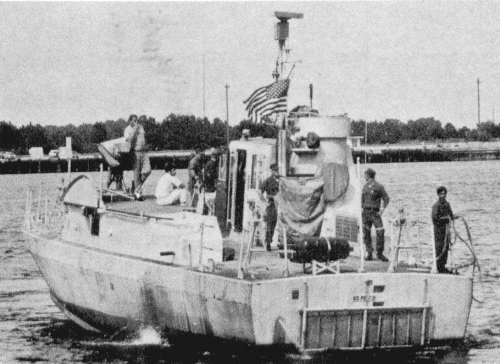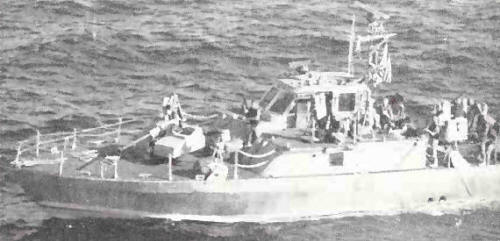
|
Names |
65PB731-738 65PB751-759 65PB7510 65PB771-778 |
|
Builders |
Peterson Builders, Sturgeon Bay: 65PB731-738, 65PB751-759, 65PB7510, 65PB771-778 |
|
Commissioned |
1975: 65PB731-738 1977: 65PB751-759, 65PB7510 1979: 65PB771-778 |
|
Losses |
none |
|
Transfers |
Columbia, 1989: one boat (Sgto 2.° Jaime Gómez Castro) Columbia, 1990: one boat (Juan Nepomuceno Peña) Ghana, 2008: one boat (David Hansen) |
|
Discarding |
early 1990s: 65PB732, 733, 736, 738, 752-754, 756, 7510, 771-774 1995-1997: 65PB757-759 1998-1999: 65PB731, 734, 735, 737, 751, 755, 775-778 |
|
Displacement standard, t |
28 |
|
Displacement full, t |
37 |
|
Length, m |
19.8 |
|
Breadth, m |
5.50 |
|
Draught, m |
1.80 (props) |
|
No of shafts |
3 |
|
Machinery |
3 General Motors 8V71TI diesels |
|
Power, h. p. |
1800 |
|
Max speed, kts |
30 |
|
Fuel, t |
diesel oil |
| Endurance, nm(kts) | 450(26) |
|
Armament |
1 x 1 - 40/60 Mk 3 Mod. 9 or (1 - 2) x 1 - 25/75 Mk 38 Bushmaster or (1 - 2) x 1 - 20/70 Mk 10, 2 x 1 - 12.7/90, (1 - 2) x 1 - 7.6/90, (1 - 2) x 1 - 81/12 M29 mortars |
|
Electronic equipment |
1 - 2 nav. radars |
| Complement | 9 |
Project history: No Mk lIs were built. Mk I was a navy version of the enlarged (65ft) Swift built for export from 1966 on: thirteen in FY65 (nine for Korea, one for El Salvador, one for the air force, two for the army), six in FY71 (Philippines), and many others for direct export. Total production of 65-footers, including commercial craft for oil field support, may have been as high as 200. Export customers: Antigua (one), Bahrain (two), Costa Rica (five), Dominica (one), Haiti (three), Honduras (five), Liberia (six), Nigeria (six ordered, four delivered), Panama (two), and St. Lucia (one).
The Patrol Boat (PB) was developed as a successor to the 'Swift'. Two Mk I were completed by Sewart Seacraft in 1972 and delivered in 1973. They have one twin and four single gun positions for 20mm or 12.7mm guns. An alternative Mk III design by Peterson Builders of Sturgeon Bay, Wisconsin, won in competition with Mk I and was procured, in 1982, for inshore warfare. Like the Swift, it was adapted from a Gulf of Mexico support boat. The pilot house was offset to starboard to provide maximum deck space, and the nominal armament of four 12.7mm machine-guns can be reinforced by heavier weapons on the main deck. For example, in 1981 the Norwegian Penguin III anti-ship missile was evaluated for them, though it proved too heavy.
PB Mk IV was a slightly lengthened (68ft) Mk III, built for Panama Canal Zone defence under the FY84 programme.
Modernizations: None.
Naval service: No significant events.

PB Mk III 1976

PB Mk III 1987
© Ivan Gogin, 2016